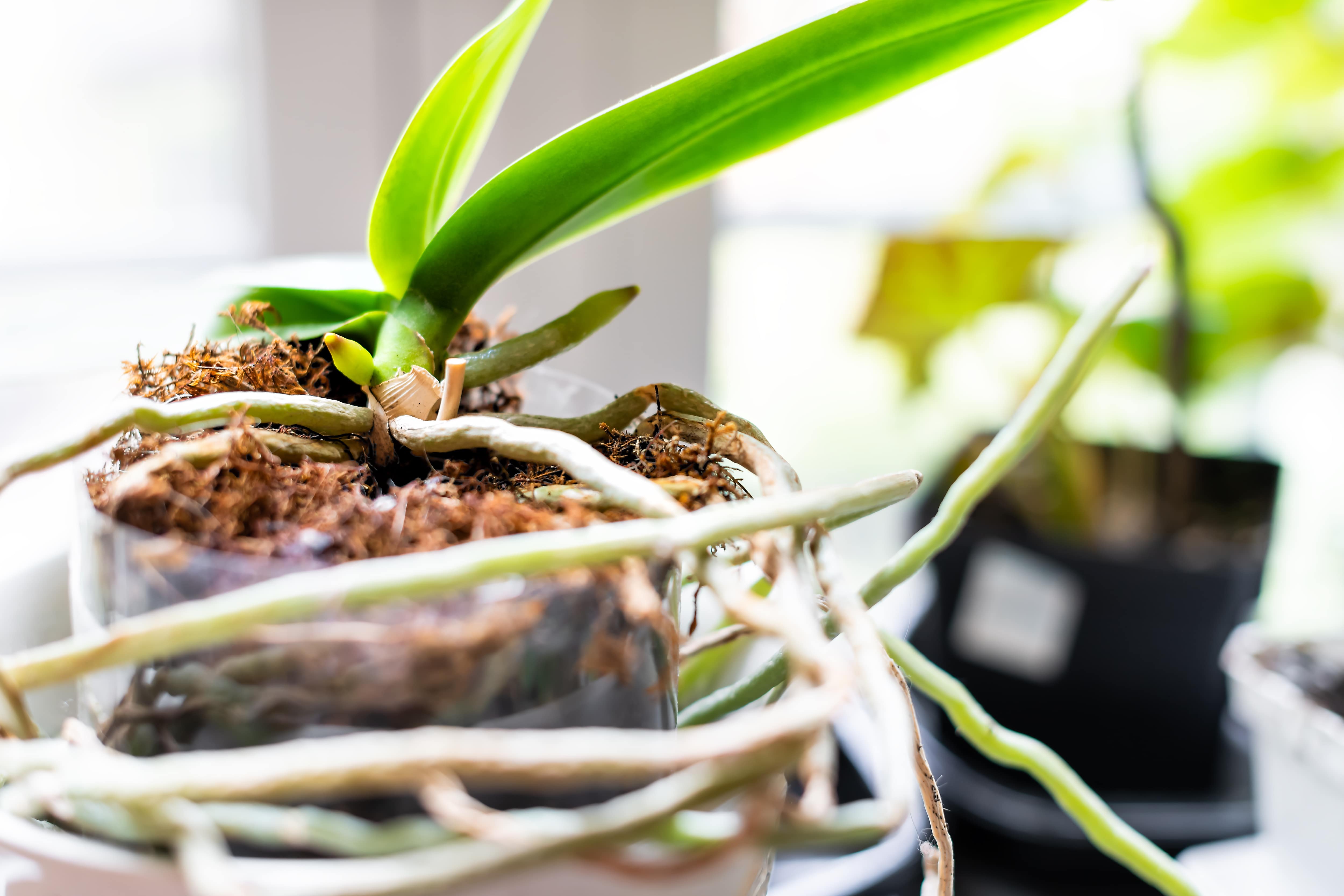
Xeriscape costs depend on materials, the size of your yard, and if you DIY. This guide will help you determine what your xeriscaping project will cost.
Understanding these plant classifications is the first step to a thriving garden


Annual vs. perennial—whether you’re new to gardening or have been digging a spade into the dirt for longer than you can remember, you’ve likely seen the terms “annual” and “perennial.” But what’s the difference between these two common gardening terms?
Simply put, an annual is a plant that lives for one growing season, and a perennial is a plant that lives for more than two growing seasons. Here’s a more detailed breakdown of the differences.
An annual is a plant that lives for one growing season. During that season, annuals will germinate, bloom, propagate, and die. Annuals need to be replanted each year, and their primary mission is to bloom rapidly and plentifully.
Common types of annuals include zinnias, petunias, and marigolds.
A perennial is a plant that lives for more than two growing seasons. Roughly translated, the word “perennial” actually means “through the years.” Perennial plants typically die down in the winter but reappear in the spring. This cycle of peek-a-boo is made possible by the strong root systems that perennials build during their first growing season, most of which are durable enough to withstand cold temperatures.
Common types of perennials include black-eyed susans, purple coneflowers, and Knock Out roses.
Annuals live for one growing season at a time.
Perennials last several years, coming back each season.
Annuals bloom rapidly.
Perennials build strong root systems, which help them return each year.

The biggest benefit of annuals is that they have brightly colored flowers that bloom all season long, which makes them a popular choice for gardeners seeking the instant gratification of seeing flowers quickly. Other benefits include:
Annuals are great starter plants for first time gardeners because their life cycle provides a master class on everything involved in planting, growing, and maintaining a garden year after year.
Annuals cost less than perennials at the time of purchase; however, they’ll need to be replanted each year, so they’re a recurring cost.
Because perennial plants use their first season to build the roots needed to survive into a second season, having annual plants in your garden alongside them will ensure plant and flower growth during the time when the perennials aren’t in bloom.

The biggest benefit of perennials is that they have the most longevity, which also makes them the most cost-effective in the long run. You might spend more on perennials upfront, but you’ll save money down the road by not having to replant them every year, making them a solid long-term investment. Other benefits include:
Perennials typically bloom at different times during the year. Planting a variety of perennials in your garden at various times will result in fresh buds and vibrant colors year-round.
They can be lower maintenance than annuals, which often require frequent watering throughout the summer. A perennial shrub, meanwhile, may not. They do still require upkeep, however, and it’s especially important to know how to prepare your flowers for winter to care for them properly.

Since perennials are slightly more expensive than annuals, the fully grown plants are worth sharing with fellow gardeners. There are a few different methods for propagating perennials, but no matter the method you choose, propagation is not a process to rush into.
Be sure that your perennial has had the time and care needed to become established before you start regrowing or gifting it. If your plant is ready, propagating it through division is an easy process to follow.
Choose the plant you’d like to split, and thoroughly water it in the days leading up to dividing it.
Carefully remove the plant from the ground.
Gently sweep away as much dirt from the roots as you can for a clear view.
Use your fingers to carefully separate the roots, which will likely be clumped and tangled together. Older, well-established plants can be more difficult to separate by hand, so you may need to use shears to separate the roots. Divide the root system in half, leaving as much of the root systems intact as possible, though some will be damaged in the process.
Dig a hole, and place the newly separated root system into it, then cover it with soil.
Once both root systems have been planted, water them thoroughly.
Both annuals and perennials provide far more than just a lovely aesthetic—they’re a fan favorite of pollinators, too. Bees, butterflies, and hummingbirds will happily flock to blooming lavender, calendula, echinacea, cosmos, and Russian sage, transforming your garden into a pollinator’s paradise.
Though the words “annual” and “perennial” might seem synonymous with flower, there are a wide variety of plants that fall into each category. Asparagus and rhubarb are perennial vegetables, for instance, while potatoes and tomatoes are technically annuals. Herbs can be both. Basil is an annual herb that will only last a few months outside, whereas mint is a perennial herb that will keep coming back (and be somewhat invasive if left unchecked).

The best gardens contain a mix of annuals and perennials for a stunning display of color year-round—or during the warmer months. But not all annuals and perennials will work for your growing area. So how do you know what to choose?
Understanding your location is the key to successfully growing any type of plant. Annual plants generally succumb to the cold, so where you live will dictate if and when they can be planted.
Perennial plants are more tolerant of extreme climates; however, not every perennial is hardy enough to withstand cold weather conditions or dry, arid climates. That’s why it’s important to determine the hardiness zone you live in before adding any perennial to your garden checklist.
It’s also key to assess how much sunlight your garden gets when determining which annuals and perennials to buy.
If your yard doesn’t get much sun exposure, don’t be deterred—there are plenty of annual and perennial plants that love to dwell in the dark.
Annuals
Impatiens
Lobelia
Fuchsia
Perennials
Dogwood
Begonia
Lily of the Valley
Some annuals and perennials only need a little bit of sunshine during the day to thrive. Too much, and they’ll burn up; too little, and they’ll become pale and die. Luckily, plenty of gardens have a nice mix of sun and shade and would do well with partial-shade plants.
Annuals
Pansies
Sweet pea
Balsam
Perennials
Creeping thyme
Astilbe
Elegans hosta
If you have a yard that’s always soaked in sunlight, take full advantage of its every well-lit corner by planting the perennials and annuals that crave maximum sunshine.
Annuals
Marigolds
Petunias
Zinnia
Perennials
Canna
Daylily
Chrysanthemum
There is actually another category of plant that’s lesser known, the biennial. What is a biennial? A biennial is a plant that lives for two growing seasons before dying. Biennial plants and flowers often don’t bloom until the second year of their growth cycle. However, if planted early enough in the spring or indoors during winter, some may flower in their first year.
Common types of biennials include Forget-me-nots, Hollyhocks, and Foxglove. Biennials can be combined with perennials and annuals to fill any gaps in a changing landscape.
From average costs to expert advice, get all the answers you need to get your job done.

Xeriscape costs depend on materials, the size of your yard, and if you DIY. This guide will help you determine what your xeriscaping project will cost.

A landscape designer can elevate your outdoor space and bring your vision to life. Use this landscape design cost guide to budget for your next project.

Looking to step up your golf game without leaving your property? This guide details backyard putting green costs to help you decide if this project is worth it.

Some landscaping projects are subject to local building codes and require a permit. Learn when you need a permit for landscaping work and when you don’t.

Are you wondering, “Who can I hire to aerate my lawn?” Learn how to find and hire a local lawn service to get the job done and make your yard look healthy.

Nothing spruces up your home’s exterior quite like refreshing flower beds and walkways with landscaping materials. Learn what questions to ask about mulch before ordering.